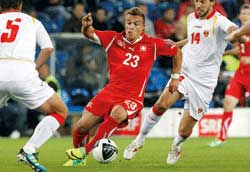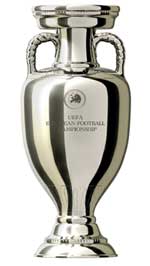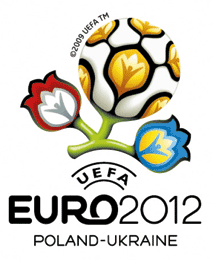
UEFA’s Battle for its Brand

(Photo: istockphoto © zentillia)
by François Gindrat, Legal Counsel, UEFA,
This second in a series of articles on intellectual property (IP) and sport outlines the approach used by the Union of European Football Associations (UEFA) to safeguard the IP rights with which it generates revenue that helps finance major sporting events and contributes to the long-term development of the sport.
Two red-letter days – May 19 and July 1 – are, no doubt, already marked in the calendars of soccer fans across the globe. On these dates, Europe’s top national soccer teams will lock horns in the match play finals of two of European football’s blue riband competitions - the UEFA Champions League and UEFA EURO 2012 respectively. This article considers how UEFA gores about protecting one of the world’s well-known brands.
Among the world’s top sporting events, surpassed only by the FIFA World Cup and the Olympic Games, interest in UEFA’s competitions goes far beyond the soccer community. Over one billion people tuned into the 2008 UEFA European Football Championships with, on average, an estimated 150 million television viewers watching each match. Some 1.1 million spectators watched the matches live inside stadiums and a further 4.2 million followed the action on giant screens located in official “fan zones”. The UEFA EURO 2012 tournament, including qualifying matches, is expected to attract a cumulative audience of 4.3 billion, a global live television audience of 1.1 billion with an estimated 55,000 hours of TV coverage across 220 countries making it one of the world’s premier brands.
By protecting its intellectual property (IP) rights, UEFA is able to maintain the sustained growth and development of European football. With these rights, the European football’s governing body can generate revenue by granting and guaranteeing exclusive licenses to its official commercial partners. The derived revenue is distributed with the aim of promoting the healthy and continuous development of professional, amateur and youth football throughout Europe.

Switzerland’s Xherdan Shaqiri (center) fights for the ball
against Montenegro’s Radoslav Batak (left) during the
EURO 2012 group G qualifier match between Switzerland
and Montenegro at the St. Jakob-Park Stadium in Basel,
Switzerland on October 11, 2011.
(Photos: © KEYSTONE/Alessandro Della Bella)
Assisting National Associations
A proportion of this revenue is devoted to tackling some of Europe’s key social issues. For example, over 400 million euros were disbursed from the coffers of the UEFA EURO 2008 tournament to member associations via UEFA’s HatTrick program. This program provides financial assistance to national associations in support of their efforts to improve and upgrade their infrastructural, administrative, managerial and sporting environments. The support of commercial partners is, therefore, vital, not only in financing major sporting events but also in ensuring the long-term development of the sport as a whole.
Protecting the IP rights of one of the world’s well-known brands is a challenging task. The downside of the broad global interest in UEFA’s tournaments is that they are seen by many as an opportunity to associate themselves, their goods and services with the success and reputation of these events. This threatens UEFA’s ability to finance these tournaments. UEFA relies on the revenue derived from sponsorship deals with official partners to finance the championships. Official partners pay for the privilege of being associated with the championships in return for guarantees of exclusivity. This makes protecting the IP rights linked to the competitions a key priority for UEFA - a task made all the more daunting given the scale, variety and impact of rights violations that arise.
The types of infringements UEFA faces fall into three main categories, namely, infringements of IP rights, misuse of tickets and ambush marketing (also known as parasitic or guerilla marketing).
| About UEFA |
|---|
|
The Union of European Football Associations, UEFA, was founded in 1954 and is the governing body of European football. Its main tasks are to promote, protect and develop football at all levels of the game; to promote the principles of unity and solidarity; and to deal with all questions relating to European football. UEFA currently brings together 53 national associations. UEFA organizes football competitions for women, men and young people. The two main UEFA competitions are the UEFA Champions League, for clubs, and the European Football Championship (also known as “UEFA EURO”, followed by the year in which it is being held, e.g. UEFA EURO 2012), where the best European national squads play for the continent’s most coveted trophy every four years. The next UEFA EURO championship is to be held from June 8 to July 1, 2012 in Poland and Ukraine. |
IP rights violations include infringements of trademark and/or service mark law involving, for example, the abusive registration of marks or domain names identical or similar to event marks, or the unauthorized use of event marks in advertising or on products. They also include infringement of copyright law in relation to the unauthorized re-transmission of matches as well as the misuse of designs in terms of the visual identity of the event, for example. The misuse of tickets relates to the unauthorized re-sale of tickets and their unauthorized commercial use (including for promotional or advertising purposes, as prizes in competitions or sweepstakes or as part of a travel package).
Violations relating to ambush marketing encompass any unauthorized association with a UEFA event, including those that do not involve misuse of IP rights. The interpretation of ambush marketing varies according to jurisdiction. Countries adopt different legal measures to tackle the issue, including specific legislation to prevent it. Such legislation usually prohibits the unauthorized use of events marks; any words or images that indicate an unauthorized association with the event (ambush by association); activities/promotions creating an association with the event (ambush by intrusion); as well as unauthorized street trading/advertising in the vicinity of event venues.

European soccer’s most coveted
trophy is protected in various ways,
by copyright law, and variously
through the European Community
Trademark System (CTM 007463821)
including in 3D (CTM 8860025) and the
Madrid System for the International
Registration of Marks (IR 1020340).
The trophy is also protected as a
registered design (RCD 635750-33-34).
(Photo: UEFA)
In the lead up to the UEFA EURO 2012 championship, for example, Ukraine adopted the “Law of Ukraine on organizing and staging the final tournament of the 2012 European Football Championship”. This law stipulates, among other things, that Ukraine provides for the protection of the IP rights of UEFA and its commercial partners and prohibits ambush marketing (defined as a “any type of activity (marketing, advertising, PR) associated with the tournament, with the aim of gaining profit from the goodwill by a party which has not been authorized to do so by UEFA”).
UEFA’s Rights Protection Programme (RPP) has been developed and implemented to tackle any infringement of its rights. It is also designed to safeguard UEFA’s investments as well as those of its commercial partners. In so doing, the RPP ultimately serves the interests of soccer fans everywhere who have an opportunity to share in the excitement of the tournament and celebrate their sporting heroes.
UEFA’s RPP includes a range of preventive and reactive measures such as:
- obtaining guarantees for the protection of IP rights from countries hosting UEFA tournaments;
- monitoring the use of IP rights linked to a specific event by third parties;
- monitoring the registration of similar marks or domain names, and the use of registered marks or domain names in the press or on the Internet;
- the inclusion of provisions outlining the use of IP rights and the prohibition of ambush marketing in all contracts signed with UEFA’s partners in the organization of the event;
- inclusion of provisions in competition regulations to ensure that participating teams and their sponsors do not abuse UEFA’s rights; and
- implementation of a communications strategy that promotes broad understanding of why it is important to protect the IP rights linked to an event such as UEFA EURO 2012 and the negative consequences of infringing those rights.
In parallel, UEFA works with a global network of legal specialists who advise on any potential infringements that may arise. This allows the European football governing body to act swiftly and decisively whenever its rights are infringed. UEFA has already dealt with over 400 cases of rights infringement relating to the upcoming UEFA EURO 2012 championship. Many of these cases involved attempts by third parties in the host countries to register marks and designs referring to the upcoming championship. The national trademark offices of Poland and Ukraine received several hundreds of such applications, which were promptly rejected.
Working with Host Countries

The EURO 2012 championship logo is registered
under WIPO’s Madrid System for the International
Registration of Marks.
UEFA also works closely with customs authorities and local administrations to monitor commercial activities, such as the sale of unauthorized or fake merchandise, in host countries. Such collaboration has already resulted in 40 seizures across Europe. The first case involving counterfeit UEFA EURO 2012 products arose in Poland in March 2010 when Polish customs officers intercepted a shipment of over 10,000 pairs of children’s sports shoes emblazoned with EURO 2012.
Strict regulations on the management of competition sites are also implemented to prevent any unauthorized commercial activity in or immediately around the competition stadiums, again, with a view to guaranteeing the exclusivity of official partners and safeguarding the long-term financial interests of the tournament.
From the perspective of official partners, their exclusive association with the tournament is a unique platform to create new opportunities for business development while facilitating access to the event.
The registration and defense of marks is at the heart of UEFA’s IP protection strategy. As the holder of registered marks, UEFA is in a position to guarantee exclusive licensing rights to the commercial partners associated with its competitions. Such protection is often enshrined in a contract.
In the absence of special legislation, the protection afforded by trademark/service mark law remains the best way to combat the many infringements of the commercial rights linked to major sports competitions. The registration of a mark is often key to obtaining the support of the national authorities (in particular customs authorities, the police and trading and standards agencies) responsible for tackling infringing activities.
Marks for sporting events are unlike other well-known marks in that they have a very short shelf life. Those linked with the UEFA European Football Championship, for example, are specially created for the competition held in a particular year. This can be a challenge given the fact that registration procedures in some countries are not always adapted to the competition cycle. In this respect, the WIPO Madrid System for the International Registration of Marks is very useful as it guarantees the registration of events marks within 18 months, whereas in certain countries that are not part of the Madrid system, registration can take much longer. As these events are world renowned, the associated marks are registered not only in the host countries and all those taking part in the tournament, but also at the global level. The marks are also registered in almost all classes of goods and services to cover those offered by UEFA’s official partners.
The main designations linked to this year’s championship, namely, UEFA EURO 2012 and POLAND UKRAINE 2012 are, along with their local equivalents, protected as word marks, as are the different language versions of the official slogan “Creating History Together”. UEFA has also sought to protect the figurative elements of the UEFA EURO 2012 emblem, mascots and trophy. These official marks are widely protected through trademark or service mark registration, copyright and other IP laws.
While trademark law is effective in tackling many of the types of IP infringements organizers of major sporting events face, it does nothing to halt violations relating to ambush marketing. For this reason, a growing number of host countries adopt special legislation to afford the IP rights associated with high profile competitions greater protection. Such legislation gives organizers greater scope to stop unauthorized third parties from associating with the events. Protecting the interests of event organizers and their official partners ensures that the financial benefits of hosting such events flow to the host country and ultimately to fans who are offered a unique opportunity to celebrate and participate in their sport of choice.
The WIPO Magazine is intended to help broaden public understanding of intellectual property and of WIPO’s work, and is not an official document of WIPO. The designations employed and the presentation of material throughout this publication do not imply the expression of any opinion whatsoever on the part of WIPO concerning the legal status of any country, territory or area or of its authorities, or concerning the delimitation of its frontiers or boundaries. This publication is not intended to reflect the views of the Member States or the WIPO Secretariat. The mention of specific companies or products of manufacturers does not imply that they are endorsed or recommended by WIPO in preference to others of a similar nature that are not mentioned.